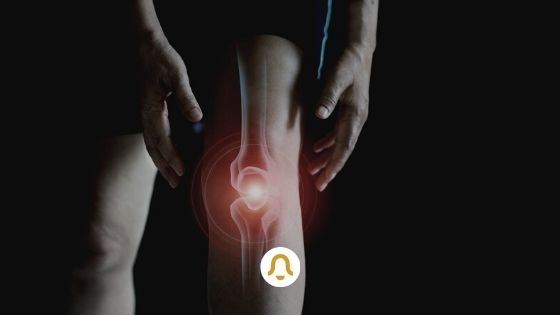Joint pain often results from improper stress, for example during sports or from long periods of sitting. Our experts know what you can do about it. Sometimes the body feels stiff, the joints ache, and suddenly you feel years old. The good news: In many cases, you can do a lot yourself against joint pain.
It helps to start with typical causes of pain in the joints, which are also known as arthralgia. “The classic causes of joint pain are overload and obesity,” says pain therapist Dr. Torsten Pfitzer .
Joint pain: overload is a cause
An overload often arises during sport, for example through an unfavorable posture while jogging or through very one-sided loads. “This leads to an imbalance in the muscle-fascia chain,” explains the expert. For many people, the front is shortened while the structures on the back are elongated. You tend to curl up at the front, for example by sitting in an awkward posture for long periods of time.
The structures of the body adapt to it, but this leads to incorrect loads – and in the long run this causes pain. That is why it is very important in the case of joint pain that you train the structures that have been shortened to length again
Pay attention to body weight and diet
If you cannot compensate for this, the incorrect loading can even damage the cartilage in the joint structures over time, leading to osteoarthritis. “That can happen at a relatively young age,” says Pfitzer. Appropriate exercise and body weight play a major role in preventing joint pain and wear and tear.
Diet also has an impact on the joints. “It has been discussed for years whether, for example, sugar, cow’s milk and white flour have an inflammatory effect,” says Pfitzer. For example, they are suspected of promoting rheumatic diseases.
Rheumatic diseases cause joint pain
Rheumatism is an autoimmune disease. The body attacks its own tissue. This leads to very different symptoms, for example joint pain at rest and at night, swelling in the joints and often a general feeling of illness with exhaustion, fever and night sweats .
Rheumatism is a generic term for various rheumatic diseases. Rheumatoid arthritis, for example, is well known: it causes swelling of the joints in the fingers and joint pain in the fingers.
See a doctor if the symptoms persist
If you suspect that joint pain could be due to a rheumatic disease, you should definitely see a doctor. It should also be clarified if the joints are reddened and swollen or the symptoms do not subside. In acute joint inflammation, in which the joint is reddened and swollen, it usually helps to take it easy and apply cold compresses. Light, calm movement can also help.
“Whether you train with joint pain is always a matter of discretion,” says Pfitzer. “Of course, it doesn’t make sense to run a long distance if you get severe knee pain every time from kilometer 3. In such a case I advise you to reduce the load or to pause for a while from running completely and to bring the muscle-fascia tension into balance ”.
Train the body in a balanced way
The joints that usually react early to improper loading are the ankle, knee , hip and shoulder , and in some cases the elbows. In any case, it is important to train all areas of the body in a balanced way in order to avoid improper stress. This also includes doing stretching exercises and keeping an eye on the fascia. “You should also think of the temporomandibular joints,” says Pfitzer. “They are often neglected and they have a great impact on the whole body”.
For acute joint pain and also for prevention, training with a fascia roller or a fascia ball can be helpful. Ideally, you alternate structures around different joints in your routine in order to train all areas in a balanced way.
More about health:


